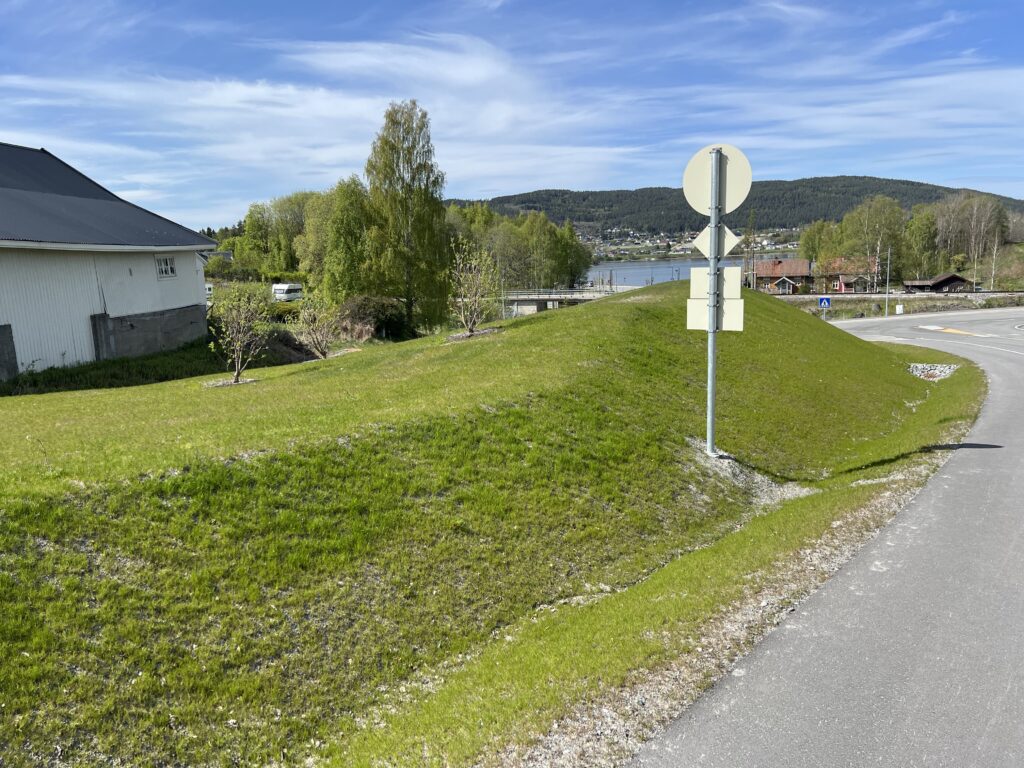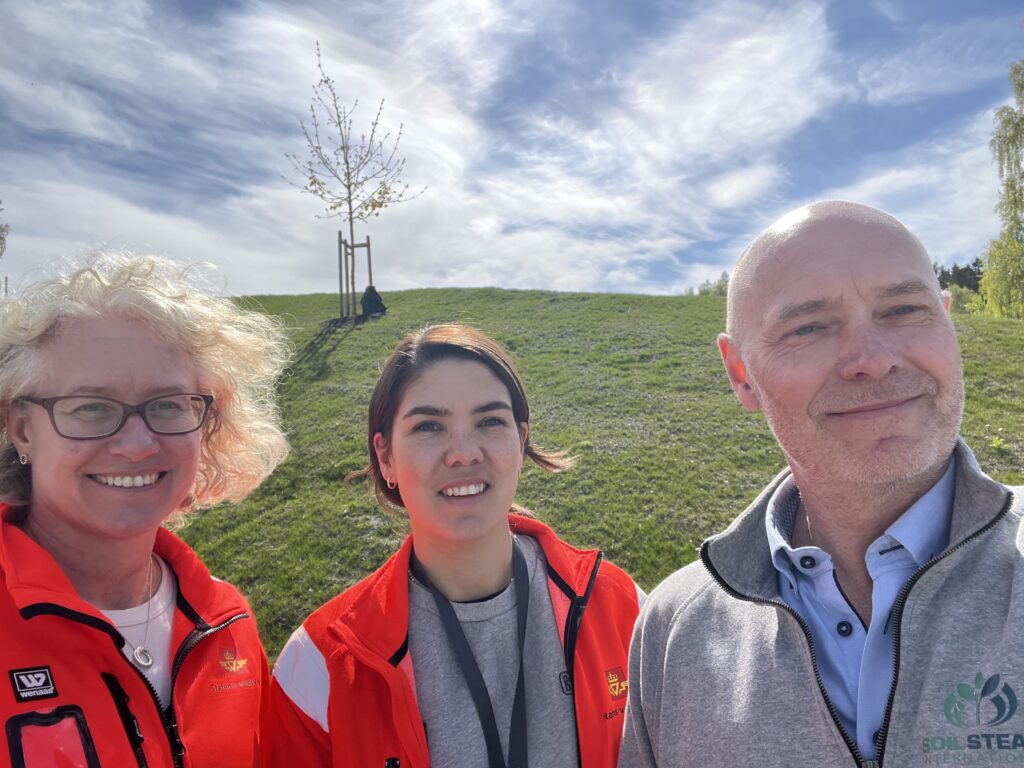Soil as a Resource – Not Waste: Norwegian Road Authorities Reuse Steamed Soil in Groundbreaking Infrastructure Project
This summer, a small piece of environmental history was made in Jevnaker, Norway. For the very first time, the Norwegian Public Roads Administration (Statens vegvesen) reused steamed soil in an active road construction project – and the results have so far been promising, both for the environment and for project economics. The project showcased a new approach to dealing with soil contaminated by invasive plant species, where the soil is not discarded but treated, reused, and given new life.
The initiative was carried out by Dokka Entreprenør in partnership with SoilSteam, a company based in Sandefjord. With SoilSteam’s custom-built machine, the SoilSaver 20, over 4,000 tonnes of soil were treated on-site – soil that otherwise would have been trucked to a landfill due to contamination by species such as Japanese knotweed and Canadian goldenrod.

A New Approach to Sustainable Soil Management
The project was a pilot, and a crucial step toward more sustainable practices in large-scale construction. According to Mari Skybak of the Norwegian Public Roads Administration, the bidding process encouraged contractors to propose innovative solutions – and DEAS, the executing contractor, was the only one to suggest soil steaming as an alternative to landfill disposal.
“We have a strong focus on biodiversity and a vision of zero net loss of nature in our sustainability strategy,” says Skybak. “The idea of steaming the soil instead of disposing of it allowed us to reuse a limited resource – topsoil – right on site. That’s a win for both the environment and the budget.”
Contaminated soil is not only a biological problem – it’s also a resource issue. Topsoil is non-renewable on human timescales. Disposing of it due to invasive species results in a loss of valuable natural material. Steaming the soil and reusing it drastically reduces transportation, emissions, and the strain on landfill capacity.
Encouraging Results Across the Board
Despite some logistical challenges – including heavy rain and clay-rich soil – the project went ahead as planned. After steaming, the soil was returned to the site, seeded, and fertilized. The results? Strong vegetation growth, minimal weed presence, and no visible resurgence of invasive species so far.
“The grass has taken root quickly and grown well. With proper maintenance going forward, we’re optimistic,” says Skybak.
Hans Kristian Westrum, founder and Sales Director at SoilSteam, is thrilled with the outcome:
“This was the first time our technology was used in a live infrastructure project. We’ve now proven that the method is not only environmentally sound, but also cost-competitive. Plants grow just as well – if not better – in steamed soil, and there are no signs of the invasive species returning. That’s exactly what we aimed for.”

A Solution Gaining Traction
The success in Jevnaker is already spreading. According to Westrum, Sweden’s Transport Administration (Trafikverket) as well as several municipalities and county authorities in Norway are now encouraging – or even requiring – soil steaming as an alternative to landfilling contaminated soil.
“It’s incredibly important for us that large public agencies like the Norwegian Roads Administration take the lead. Their validation helps open doors. We expect to help recover over 100,000 tonnes of soil from being landfilled this year alone.”

Looking Ahead
Skybak is clear that the method won’t be a one-size-fits-all solution. It requires space, coordination, and the right project conditions. But when applicable, it offers clear environmental benefits.
“If a project has the space for soil storage and there’s a will to look beyond just the spreadsheets and carbon accounting, then steaming and reusing topsoil is the best way to protect a vulnerable natural resource,” she says. “I will definitely advocate for it in future projects.”
Rethinking Construction: Not Just Building, But Preserving
While many green innovations require major investment and long-term planning, the Jevnaker project shows how practical, implementable technologies can deliver immediate and measurable results. Perhaps the construction projects of the future won’t just be about what we build – but also about how we care for what’s already in the ground.